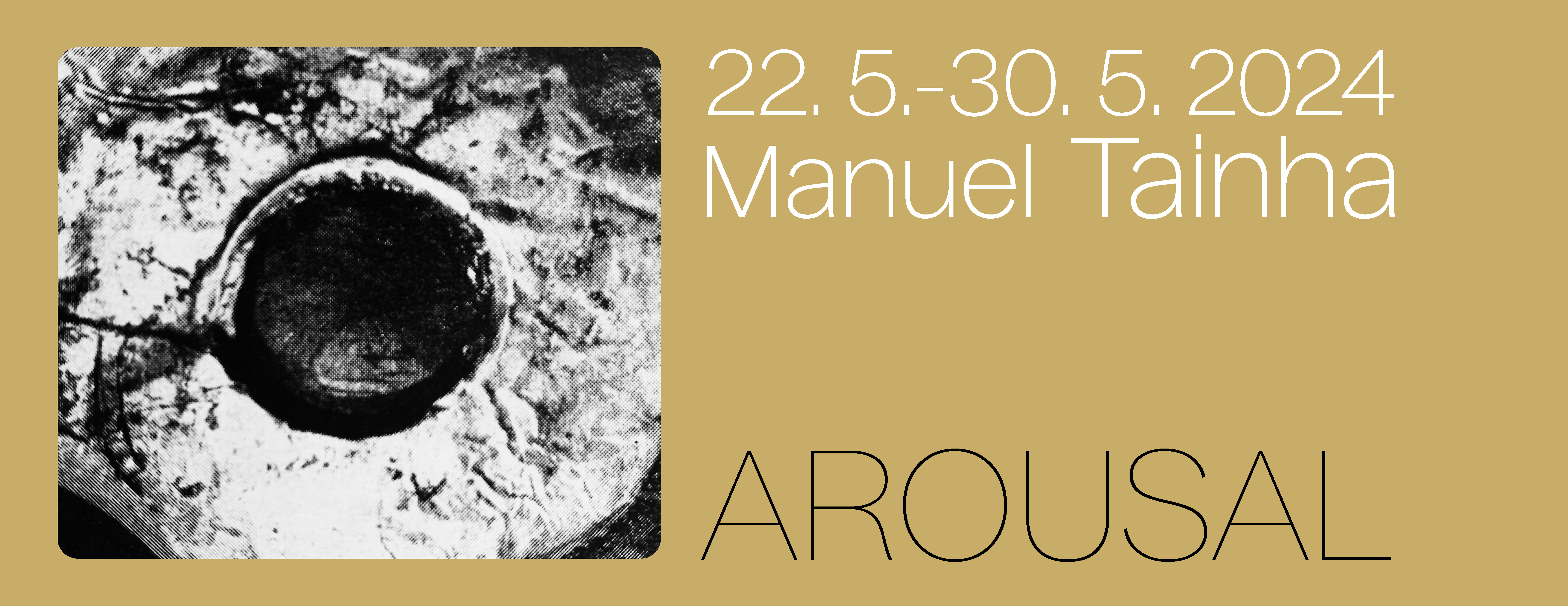Manuel Tainha: Arousal

We are inviting you to the exhibition Arousal by Manuel Tainha, curated by Šárka Koudelová.
opening of the exhibition: 05/21/2024 at 6 p.m.
exhibition: 05/22 – 05/30/2024
A brain on the autisitc spectrum or with post-traumatic stress disorder navigates a person’s attention off-center – its user then notices details and peripheral parts instead of focusing on the main motif in the middle of visual impression. According to architects and theorists Ann Sussmann and Katie Chen, these neurodivergent modes of brain functioning are one of the conditions for the emergence of modern architecture. In their essay, they ask why, since the 1920s, have architects suddenly not seen the world through the same lens as before? “They couldn’t. Their brains were either physically altered by the trauma of war or, like Le Corbusier, they had a genetic brain disorder. And while their recommendations for ‘good design’-a new world, a clean slate-certainly reflected their talent, ambition, and determination, their solutions also reflected the their brains’ specific disorders.”[1] In short, the decorative details, dangerously large windows, and central symmetry became an irritating burden on the overstimulated perceptions of people who had experienced World War I.
Manuel’s paintings, often reminiscent of accidental photographic process or distant star constellations, attempt to encompass the ergonomic nature of the painting process as well as to affect the functioning of the surrounding space. Velvet, whose iridescent hue at once recalls the unevenly faded curtain from the artist’s childhood home, at another time the famous onyx wall in the Villa Tugendhat, is decoloured with expressive splashes of bleach, exposed to sharp sunlight, “smeared” with pigments and even embroidered on. The wide range of techniques he uses to modify the material is held together by a kind of medial functionalism – the images, however they were produced, are both a record and a purpose of the actual circumstances of their creation, and thus there can be no doubt about their form. Nevertheless, within the procedural purity of the recent works, the motif of the circle repeatedly appears, which stands out from the stirred areas with its rationality and the humanness of the trace left by a coffee cup. When Manuel was little, he drew on the edges of his grandfather’s and father’s architectural designs. He was allowed to draw on these margins because there was usually nothing strictly important there – usually trees, simplified to circles in plan view. Circles or spots are therefore a symbol of freedom for Manuel, but also a reminder of the pulsating dots he sees in moments of stress or anxiety. They are the details outside the centre of the painting that stimulate us to look for new solutions, but at the same time they indicate an overload on our nervous system.
If we accept that previous experiences, and especially the stressful ones, programme the unconscious activity of the brain and that it directly influences our conscious behaviour, we can read Manuel’s focus on the non-central parts of the space and their meaning in the installation of the exhibition. With few little exceptions, he has hung his works far from the walls. But if we also understand his paintings as architectural interventions, we shift our fleeting attention to what Manuel also exhibits – our territory, a kind of negative of the gallery’s architecture.
The purposefulness and purity of the particular paintings and the work with space are disrupted by pieces of baked goods covered in copper pigment. They are a surprising element that takes us out of our peaceful formal satisfaction, and with their camouflaged ordinariness, they are maybe an evidence of another self-diagnosed psychological disorder, but also a disturbance to what extent our previous understanding relies on “the so-called prior grounding of every understanding,”[2] as Petr Rezek describes it in reference to space. He also discusses the photography of Piet Mondrian’s studio in the seventh book of his Writings, entitled Architectonics and Protoarchitecture. “All the walls in the studio are “decorated” with Mondrian’s paintings, and in the middle stands the stove, which is not modelled as would be required by the exact establishment of pure relations. (…) And yet, between those paintings – more precisely: between those surfaces determined in an exact way – stands the classical stove.”[3]
Manuel Tainha’s exhibition is a much-needed rest for our nervous system in a state of hyperarousal, i.e. excesive psychological excitement, caused by an overload of stressful visual perceptions. Nevertheless, it still hides a message about difficult times, when a large number of young people self-diagnose themselves with post-traumatic stress disorder under the weight of crises and war conflicts, which due to social media have become tragedies of each one of us. We can’t stop watching, even when our brains make us look the other way.
[1] SUSSMAN, Ann; CHEN, Katie, The Mental Disorders that Gave Us Modern Architecture, [online] 22/08/2017 https://commonedge.org/the-mental-disorders-that-gave-us-modern-architecture/
[2] Rezek, Petr, Architektonika a protoarchitektura, vydalo nakladatelství Filosofia a Ztichlá klika, 2009, str. 17, ISBN 978-80-903898-3-0
[3] Petr Rezek, Architektonika a protoarchitektura, vydalo nakladatelství Filosofia a Ztichlá klika, 2009, str. 90 – 91, ISBN 978-80-903898-3-0
The project is implemented with the financial support of the City of Prague, State Culture Fund of the Czech Republic.